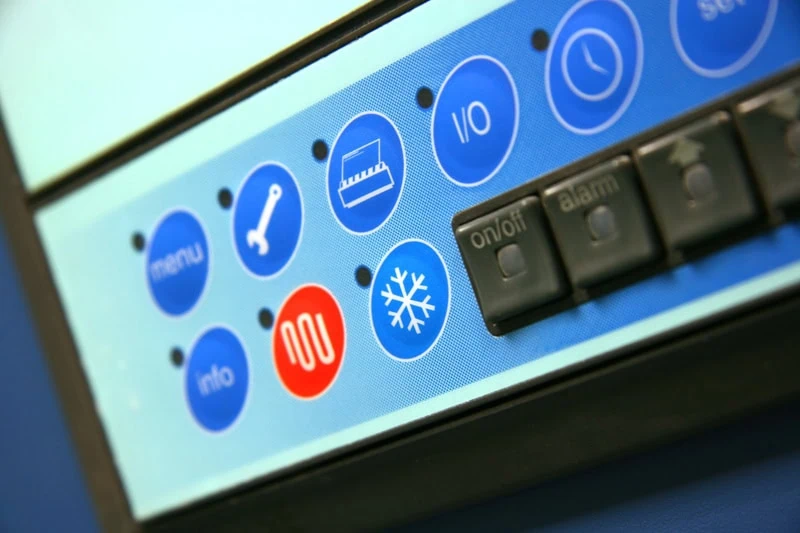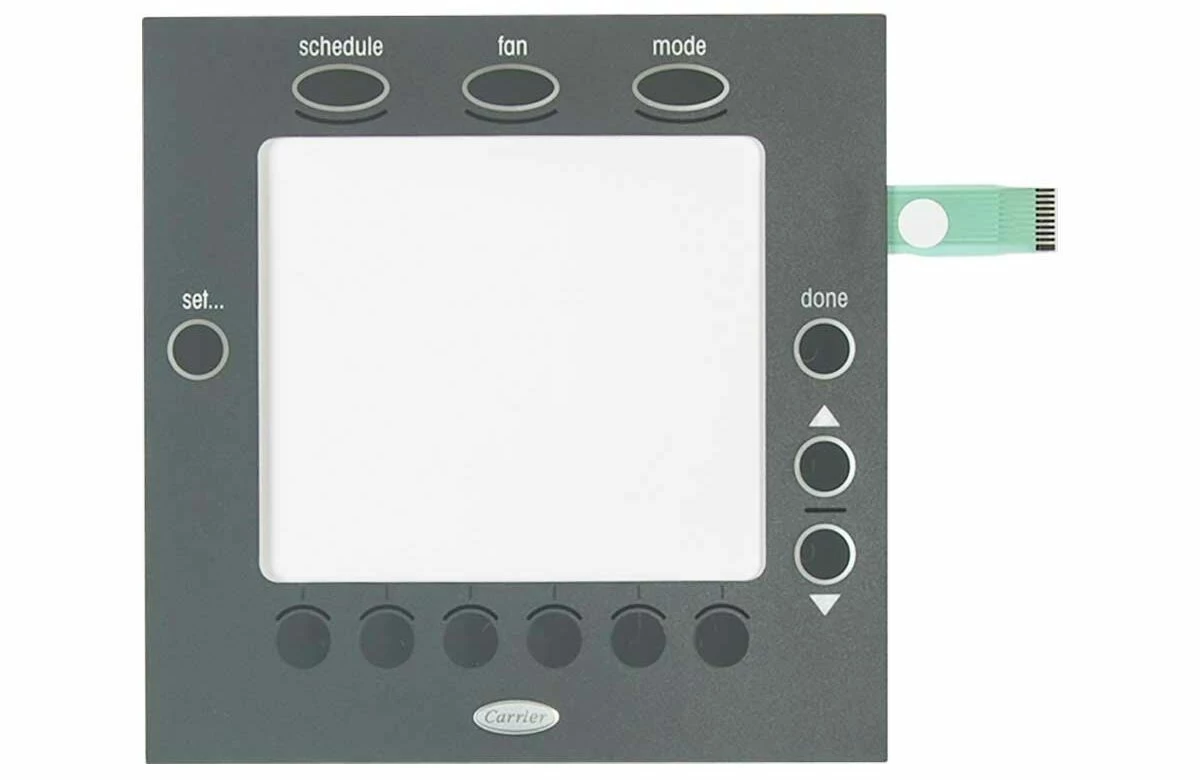Find High-Quality and Cost-Effective Solutions with Membrane Switches Modern Technology
Find High-Quality and Cost-Effective Solutions with Membrane Switches Modern Technology
Blog Article
The Ultimate Source on Membrane Layer Changes: Layout, Performance, and Applications
Membrane switches over offer as an interesting intersection of layout and performance, playing an essential duty in contemporary customer interfaces throughout various industries. As we explore the varied applications of membrane buttons, it becomes evident that their flexibility and longevity are important in environments ranging from healthcare to customer electronic devices.

Comprehending Membrane Buttons
Membrane layer switches are a kind of interface modern technology widely made use of in numerous electronic gadgets, characterized by their thin, versatile design and capability. These buttons include multiple layers that consist of visuals overlays, sticky layers, and wiring, making it possible for a small and efficient interface for customers. They can be found in home appliances, clinical devices, and commercial control panels, offering a reputable approach for individual interaction.
One of the main benefits of membrane switches is their capability to stand up to contaminants such as dirt and moisture, making them appropriate for atmospheres where resilience is crucial. Their low-profile style permits smooth integration right into various applications, while the personalized visuals overlays enhance customer experience by giving clear visual feedback. Additionally, membrane buttons can fit a selection of technologies, such as tactile comments and backlighting, additional boosting their use.
The production procedure for membrane layer changes commonly involves display lamination, die-cutting, and printing strategies, making certain precision and uniformity in production. In general, membrane layer switches over stand for a reliable and functional remedy for contemporary electronic tools, integrating capability with visual appeal in customer interface style.
Key Parts and Design Aspects
A variety of crucial components and style elements come with each other to create an efficient membrane button. At the core, the visuals overlay serves both functional and aesthetic objectives, supplying an user-friendly interface while safeguarding internal components from environmental elements. The selection of products, normally polyester or polycarbonate, influences resilience and tactile responses.
Beneath the overlay, the glue layer ensures the switch adheres firmly to the substrate, which can be glass, plastic, or steel. The spacer layer is critical, as it preserves the essential gap between the overlay and the circuit layers, enabling effective actuation. Membrane Switches. Circuit traces, normally made from conductive ink or adhesive, are published on a flexible substratum, enabling electrical signals to be transferred when stress is applied
Layout considerations likewise include the arrangement of responsive domes or embossing that give physical feedback to the user, improving the overall experience. Additionally, the format and spacing of the buttons should be optimized for simplicity of usage, making certain that individuals can browse the user interface with ease. On the whole, these elements and layout elements function synergistically to create a reliable, practical membrane layer button customized to certain applications.
Functionality and Operation Mechanism
At the heart of effective functionality for membrane layer switches over exists their functional device, which facilitates individual communication with a basic yet effective layout. These buttons run on the concept of stress activation, where a user applies force to a marked area of the switch (Membrane Switches). This activity compresses the layers of the button, completing an electrical circuit that sends a signal to the connected tool
The building and construction commonly consists of a leading graphic layer, an adhesive spacer layer, and a bottom circuit layer, which jointly form a durable user interface. When stress is used, the top layer collapses versus the lower circuit layer, enabling conductive traces to attach. This design not just allows clear tactile responses however likewise guarantees resilience and dependability, as the switches are usually immune to dirt and wetness.
Furthermore, the flexibility of membrane layer switches over permits combination with various modern technologies, including LED signs and microcontrollers, improving their capability. By supplying a streamlined user interface that minimizes mechanical wear, membrane layer changes continue to be a preferred choice in applications ranging from customer electronics to commercial equipment, ensuring optimum performance and customer complete satisfaction across diverse atmospheres.
Kinds of Membrane Buttons

Another considerable category is lit up membrane layer buttons, which include backlighting to enhance exposure in low-light problems. These buttons are often utilized you can try here in control panels and control panels where clear presence is important.
Additionally, there are custom-made membrane layer switches over developed to satisfy particular dimensional, graphical, and practical needs. These customizations can include unique shapes, colors, and formats, permitting for smooth assimilation right into different gadgets.

Applications Across Various Industries
Just how do membrane buttons improve performance across varied sectors? These flexible components are integral to various applications, delivering structured interface and robust efficiency. In the clinical market, membrane switches play an important role in devices such as diagnostic tools and individual monitoring systems, where integrity and convenience of cleansing are critical. Their ability to hold up against severe atmospheres makes them excellent for laboratory tools and medical tools.
In the vehicle industry, membrane buttons are frequently used in dashboards and control board, giving instinctive controls that boost driver security and convenience. The consumer electronic devices industry additionally gains from their lightweight and customizable functions, allowing streamlined designs for smart devices and home appliances.
Furthermore, membrane layer buttons locate applications in industrial automation, where they add to efficient equipment operation and monitoring systems. Their resistance to dust and wetness ensures functionality popular conditions (Membrane Switches). In addition, the food and drink industry uses membrane layer switches for equipment control, where health and resilience are vital
Final Thought
Finally, membrane layer switches over represent a vital technology in interface innovation, identified by their one-of-a-kind layout and capability. Their crucial parts, consisting of visuals overlays and circuit traces, add to their functional effectiveness via stress activation. The this content convenience of membrane layer switches over facilitates their application throughout varied industries, from medical tools to consumer electronics. This extensive understanding strengthens the importance of membrane buttons in boosting item functionality and sturdiness in contemporary technical settings.
Membrane layer changes serve as an appealing crossway of layout go to this website and performance, playing a critical role in modern user interfaces throughout various fields.Membrane buttons are a type of customer interface innovation extensively utilized in different electronic tools, defined by their slim, versatile style and functionality.At the heart of reliable functionality for membrane layer switches over lies their functional mechanism, which promotes user communication via a basic yet efficient style. These buttons operate on the principle of stress activation, where a user applies pressure to a designated area of the button.In conclusion, membrane changes stand for an important innovation in individual interface modern technology, characterized by their one-of-a-kind design and capability.
Report this page